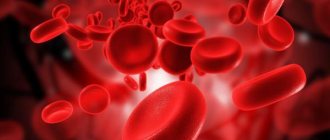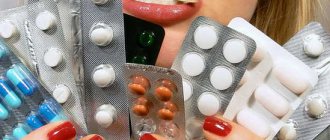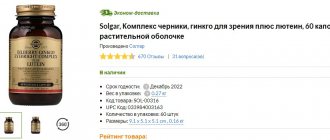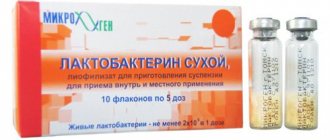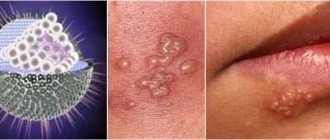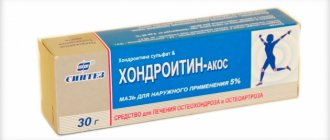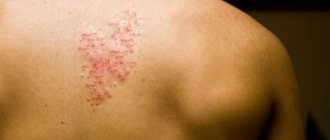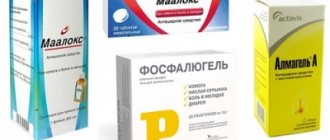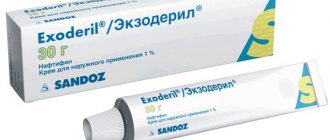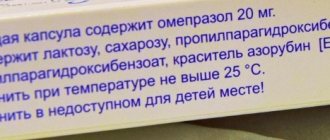Traveling to the sea is a traditional type of summer holiday that every resident of the post-Soviet space loves. Healing air, bright sun, a lot of positive impressions - all these circumstances should not be overshadowed by illness or acute pathological condition immediately after arriving at the place.
It is necessary to skillfully and correctly select the necessary list of medications for a first aid kit on vacation at sea. What to put in your first aid kit at sea? What drugs should not be purchased at sea? You will read about this and much more in our article.
Recommendations for packaging
In addition to the complete list of necessary medications, conveniently divided into groups, which will be presented below, additional recommendations as part of the procedure for completing a first aid kit are:
- Proper quality of medicines . All medications, medical devices, medicines and other products must be of the highest possible quality - do not purchase cheaper analogues of products for travel, as this may negatively affect the overall completeness and adequacy of the pre-medical care provided with the potential risks of a pathological situation. Particular attention should be paid to the expiration dates indicated on the packaging. It is better not to take with you products from your home medicine cabinet that are already several years old, but to buy new ones.
- Correct grouping. The first aid kit should be internally divided into separate groups of medications so that, if necessary, it is easy to find the required drug or medical device;
- Secure storage. It is not advisable to carry medicines and medicines in soft bags or distribute them in the pockets of a travel bag. It would be optimal to choose a separate bag made of hard material with good shock protection;
- Mandatory packaging. All medications and medications should be packaged in their original box to reduce the risk of mixing and damage during travel.
Sunscreens and sunburn treatment
To prevent your child from overheating in the open sun, you should take care of skin safety in advance and apply sunscreen. Children's skin is delicate and very sensitive to sudden temperature changes and exposure to ultraviolet radiation. Overheating can lead to skin redness, burns, blisters and fever.
The list of medications when traveling at sea with a child must contain sunscreen with SPF of at least 35, it must be applied 15 minutes before. before going out into the sun. After each stay in water, the cream must be reapplied. If sunburn occurs, it is better for the child to use Panthenol foam.
List of drugs in a first aid kit at sea for an adult
The list of medications for a first aid kit on the road and on vacation at sea should be as complete and universal as possible; the number of drugs in it significantly exceeds the standard home set of medications.
In general, it is recommended to include the following product groups:
- Medicines that help eliminate acute conditions of the gastrointestinal tract. The best options in a travel first aid kit would be drugs that improve digestion, enzymes, as well as medications against diarrhea and other negative conditions;
- Painkillers and antipyretics. Pain syndrome can be caused by a huge number of reasons. That is why it is necessary to include painkillers in your travel first aid kit. Most often they are non-steroidal anti-inflammatory drugs. It is also worth considering that a wide range of diseases, pathologies of negative syndromes are accompanied by a significant increase in temperature. Therefore, as an addition, you should definitely put drugs in your first aid kit at sea that temporarily eliminate this symptom;
- Antiseptics and dressings. Various scratches, wounds, injuries and other damage to the skin and soft tissues must be treated efficiently. For these tasks, various local antiseptics are suitable, as well as means to stop bleeding, medications for dressing, and so on;
- Means for improving tanning and counteracting burns. The first days at sea are critical for the skin, especially if a person has not received a sufficient quality tan over the summer period. It is for these purposes that you need to take similar means with you on your trip to sea;
- Other medical products. As an addition, the first aid kit can also be equipped with antihistamines and antiallergic drugs, remedies for motion sickness, colds, sore throat and ears, etc.
Remedies for diarrhea and gastrointestinal problems
New and unfamiliar food, heavy food that complicates digestion, water with a high salt content and other factors that are so common at sea can negatively affect the functioning of the gastrointestinal tract.
Statistics show that food poisoning, indigestion and other acute conditions most often occur in people who go on vacation to the coast.
List of medications for adults in a first aid kit at sea to reduce the risk of developing such conditions:
- Adsorbents. It is a group of drugs of first choice for poisoning. Typical options are Enterosgel, Polysorb, activated carbon or Smecta;
- Antimicrobial drugs. You should definitely include medications such as Nifuroxazide, Nystatin or Phthalazol in your first aid kit at sea;
- Inhibitors of gastrointestinal motility. Imodium or Loperamide can be used to reduce the intensity of diarrhea;
- Reducing electrolytes. In case of prolonged diarrhea and vomiting that accompany acute conditions, a person loses a large amount of fluid and nutrients. The drugs Gastrolit, Orsol or Regidron can restore their balance in mild forms of the problem;
- Anti-inflammatory drugs . Quite effective and necessary anti-inflammatory local drugs like Metaphor or Sulfasalazine.
- Enzymes. An obligatory group of drugs within the framework of potential help for gastrointestinal problems are drugs containing enzymes. First of all, it is Mezim, Festal or Pancreatin;
- Laxatives . Sometimes a person is not bothered by diarrhea, but rather by constipation. In this situation, Norgalax, Guttalax or castor oil will help
- Excipients. As a supplement to normalize the state of intestinal microflora, it is worth putting Linex, Hilak or Enterol in your first aid kit.
Painkillers, antipyretics and ointments
An important component of a first aid kit at sea is a variety of painkillers. At the same time, it is rational to take with you on a trip not only systemic drugs in the form of tablets, but also local ointments.
Be sure to take in your first aid kit for a trip to the sea:
- Drugs with a strong antipyretic effect. The most optimal medications are Paracetamol and Ibuprofen. In addition to a fairly powerful effect of reducing high body temperature, they also have a moderate analgesic effect. It is advisable to have these medications in your first aid kit;
- Drugs with a strong analgesic effect. The first choice drugs may be Analgin and Ketorolac. The first one will easily relieve pain of moderate intensity and acts identically as an antipyretic. The second is primarily intended for pain management and is the most potent commercially available agent in this context;
- Ointments. As an addition, you should put Diclofenac in the form of an ointment, or Diclak, in your first aid kit for traveling at sea. The first drug is inexpensive, but it relieves swelling quite well and reduces pain when soft tissue is damaged. The second one is more expensive, but its complex effect is higher.
Antiseptics
An important element of potential comprehensive protection against the progression of various acute conditions at sea is the presence of antiseptics in the first aid kit.
This group of drugs is used topically and is intended to prevent the development of secondary bacterial infections and slow down the processes of decay on the surfaces of wounds.
It is worth including the following medications in the list for a trip to the sea:
- Hydrogen peroxide. Effectively cleanses and deodorizes wounds and ulcers;
- Chlorhexidine. It is also considered an effective antiseptic and can be applied directly to the wound itself;
- Iodine solution. It has strong antimicrobial activity, destroys both mature structures and spores. It is not advisable to apply it directly to the wound, so only the closest localizations can be treated with the solution;
- Boric acid. By analogy with iodine solution, it is effective against fungal infections and even viruses. Apply to the area near the wound.
Dressing materials
Another important item in a first aid kit for the sea is the mandatory presence of dressings that can be used for various injuries to the skin, soft tissues, fractures, bruises, sprains and other types of injuries.
The first aid kit must include bandages, medical plaster, cotton wool - preferably sterile.
In addition, it is also worth taking a hemostatic tourniquet, an elastic splint, and other means as necessary.
Remedies for tanning and sunburn
The combined influence of the sea and the sun creates the preconditions for skin burning, especially if a person has not visited the beach in the summer.
It is worth getting sunscreens with the right level of protection factor, depending on how white your skin is.
Typical representatives of this group are products from the brands Uriage, The Skin House, Lancaster.
In addition, be sure to take Bepanten or Panthenol with you in your travel first aid kit when vacationing at sea - they are applied topically and help quickly eliminate the consequences of minor burns.
Medicines for skin or eye injuries
First of all, in such cases you need to have alcohol, hydrogen peroxide, sterile cotton wool and iodine with you.
But the main medications for injuries to the skin and mucous membranes of the eyes are:
- Miramistin is a universal antibacterial agent used to treat wounds and sore throats;
- Chlorhexidine solution - an alcohol-free antiseptic for treating cuts and abrasions;
- Okomistin is a universal antiseptic used for the eyes, for treating wounds, and for the ears;
- Tsiprolet is an antibiotic used for eye injuries, 1 drop. 3 times a day.
Additional funds for the trip
The above-described groups of drugs and medicines are mandatory for inclusion in a traveler’s first aid kit at sea. However, if necessary and possible, you can expand the above described kit with additional drugs and products. If you are going abroad on vacation, you can find out how to pack a first aid kit for a trip abroad at sea here.
Antihistamines and antiallergic drugs
During a trip to the sea, situations may arise that significantly increase the risk of developing allergic reactions, even in those people who have not previously suffered from such problems. This is due to a completely different climate, as well as special flora and fauna. It is worth considering that a person may even develop a food allergy to unfamiliar food.
It is worth including the following drugs in the list of medications for vacation at sea:
- Antihistamines. The most effective drugs based on levocetirizine, desloratadine and fexofenadine are Loratadine, Erius, Zodak, Telfast;
- Glucocorticosteroids. As a rule, they are used without a doctor’s prescription, but are sold through pharmacy chains without a prescription. They can be used for extremely acute conditions that in the short term seriously threaten human health and even life. In this context, the optimal choice would be Prednisolone or Dexamethasone.
Remedies for motion sickness
Typical preparations of this group of drugs in a travel first aid kit can help relieve unpleasant symptoms during a sea voyage or air flight.
List of medicines for motion sickness in a tourist’s first aid kit at sea:
- Validol. A classic domestic drug with a general calming effect. Reflexively dilates blood vessels, reduces the intensity of the response of nerve endings;
- Dramamine. Medicine containing dimenhydrinate. Has antiemetic and antiallergic effects, can eliminate symptoms of nausea and dizziness;
- Other medicines. In the vast majority of cases, they are homeopathic medicines, for example Cocculin, Avia-Sea or Vertigohel.
Cold medicines
A cold as a symptomatic complex can be caused by a wide range of reasons - from severe hypothermia to infection with viruses, bacteria, and other pathogenic microorganisms.
It is worth including the following groups of anti-cold medications in your first aid kit at sea:
- Vasoconstrictor drops are intended for the nose, relieve swelling and make breathing easier for a short period of time. Typical representatives are Nazivin, Rinazolin;
- Sprays and lozenges . Intended for the throat, ease the course of colds in this localization;
- Complex antisymptomatic drugs. The most popular combination drugs are in powder form, containing a non-steroidal anti-inflammatory drug, vitamins, caffeine, chlorphenamine maleate, phenylephrine, and so on. Typical representatives are Coldrex, Rinza, Fervex.
Ear and eye drops
They are not mandatory for a tourist’s first aid kit at sea, but are included if there is a risk of irritation and inflammation in these organs.
The most effective:
- Eye drops. Universal drugs - Vizin, Okumetil, Alomide;
- Ear drops. It is worth taking Otinum, Normax or Otipax with you.
Antihistamines
Even if you or your children have never experienced allergies, antihistamines should definitely be in your medicine cabinet. New food, exotic fruits, the smell of tropical flowers - no one knows how the body will react to them.
Suprastin or fenkarol tablets (causes less drowsiness) will protect you from allergy-related troubles. If you are going on vacation with a very young child, take Zyrtec drops.
Traveling with a child
You will be interested...
First aid kit Going to sea with a child always significantly increases the risk of developing various medical problems in relation to the baby.
A poorly developed nervous system, adolescence, insufficient protection of the membranes of the respiratory tract, decreased local immunity - all these factors that play a negative role may not lead to the development of pathology at home, but they fully manifest themselves in a different climate against the background of a number of predisposing circumstances. In nature, a child may suffer from allergies to plants, poisoning, overheating of the skin and sunstroke. It can be bitten by an insect and often injures the skin, soft tissues and even bones.
Young children suffer from colds and bronchitis at sea, are often hypothermic, and get motion sickness. With an insufficient level of general immunity, there are prerequisites for exacerbation of chronic diseases, acute intestinal infections, constipation, otitis media and other problems.
List of medications in a first aid kit at sea with a child
The first aid kit you collect at sea with a child should be even more extensive and versatile. In addition to the above-mentioned means described earlier, the first aid kit for traveling with a child to the sea must contain the following groups of drugs:
- Antibiotics. In a first aid kit for a holiday at sea with a child, it is better to choose broad-spectrum drugs based on macrolides, fluoroquinolones, cephalosporins or penicillins. Typical representatives are Augmentin, Azithromycin, Ciprofloxacin. Such medications should be used only as a last resort, when there is guaranteed confirmation that the child is developing a secondary bacterial infection, and for some reason he cannot be provided with immediate qualified medical care;
- Thermometer and pressure measuring apparatus. It is necessary to make sure that there is no very high temperature or a jump in blood pressure, even if outwardly the child looks relatively normal;
- Antispasmodics. In some situations, painkillers and non-steroidal anti-inflammatory drugs alone will not be enough. Antispasmodics like Drotaverine will help to quickly relieve spasms of smooth muscles. It is advisable to have these items in your first aid kit when traveling with a child to the sea;
- Glucocorticosteroids . When traveling to the sea with a small child, be sure to include this group of medications in your first aid kit list. Sometimes steroids become the only effective drugs that relieve severe manifestations of angioedema, excessive allergic reactions or autoimmune responses in particularly severe conditions. Typical representatives are Dexamethasone or Prednisolone.
What to take on a trip for a mother with a baby or a child under 1 year old
In general, modern doctors do not recommend long trips to the sea with children under 1 year of age, since their immune system is still poorly formed and individual organs and systems cannot adequately respond to aggressive stimuli.
Apart from the above medical supplies, there are essentially no special additions to the standard kit of a first aid kit. The only point is the choice of dosage form of drugs and medications that can be effectively used for the baby - these are anal suppositories, suspensions or syrups.
It is also worth making sure that, within the location on vacation, there are reliable mechanisms for calling and promptly delivering the child to the nearest hospital (the presence of an appropriate medical facility nearby, as well as the presence of ambulance crews on the territory), in the event of an acute situation that directly threatens the child’s life.
In the absence of the latter factors, it is advisable to change the place of rest to a more comfortable and relatively safe one in this context. You can learn about the necessary list of medications in a first aid kit at sea with a child, on the advice of Dr. Komarovsky, from the video:
Additional funds for a pregnant woman on the road
The expectant mother often wants to spend the last months before the birth of her baby in maximum comfort and have a good rest. However, before you go on a trip to the sea, you need to carefully consider the composition of the first aid kit for a pregnant woman on the road.
Regardless of the circumstances, the above-described groups of drugs must necessarily be correlated with the special physiological state of the fair sex - read all available instructions and make sure that the use of drugs or medications is safe during pregnancy.
Among the additional medications and products in the first aid kit for a pregnant woman at sea, it is worth taking the following drugs:
- Inhibitors of uterine tone. In some cases, a woman at sea may have the prerequisites for an unplanned early start in the process of childbearing - the uterus becomes toned and can gradually open. In this case, an emergency measure is the use of Duphaston or Ginipral, as well as immediate contact with a gynecologist;
- Bandage. You should definitely take it on the road to support your belly.
Medicines for chronic diseases
If you have chronic diseases and take medications on a regular basis, put them in your first aid kit first. You should calculate whether you have enough supplies for the duration of your vacation. Before traveling, it is useful to familiarize yourself with the customs regulations of the country where you plan to stay. You may need to have medical proof that you are taking a particular drug and that you really need it.
If you are traveling with a child who has a chronic illness, you also need to have the appropriate permission.
Additional tips for building a first aid kit
- In your first aid kit, it is better to use not liquid, creamy and gel preparations, but their tablet analogues. This will reduce the weight of your luggage and also allow you to take medications in your hand luggage when flying.
- Give preference to tablets in blister packs rather than bottles or vials. This will save space in your luggage.
- Calculate the amount of medication needed based on the length of the trip and remove excess from the packaging to save weight and space.
- Before a serious trip, it is advisable to visit a doctor to make sure you are ready for vacation and agree on the contents of your first aid kit. A specialist can also advise on the compatibility of individual drugs. For example, certain antibiotics interact in undesirable ways with birth control pills.
Antipyretics
When choosing antipyretic drugs, your child should take both syrup and candles with him to the sea.
The most effective means:
- Cefekon D - a drug in the form of rectal suppositories, used at any age (dosage according to the scheme in the instructions);
- Nurofen (active substance - ibuprofen) - syrup with flavorings, used up to 12 years, after which it is effective only in tablet form;
- Efferalgan is available in syrup and suppositories, but suppositories will only be effective up to 6 years of age.
What to take your child in
For your baby to travel comfortably, he needs a travel bag. When choosing a special bag, consider the age of the children, as well as the distance of the trip. If you are traveling with a baby, then choose a bag that can fit all your baby supplies. Bags for babies up to two years old can be turned into a changing place or a comfortable mattress.
The mattress and pockets of the bag should be made of a material that can be easily cleaned even with a simple damp cloth.
For children over three years old, you can buy a backpack or a bag on wheels. (Before driving, check the wheels for strength). This will be the most magical trip for them: the view is good, and their parents are nearby.

